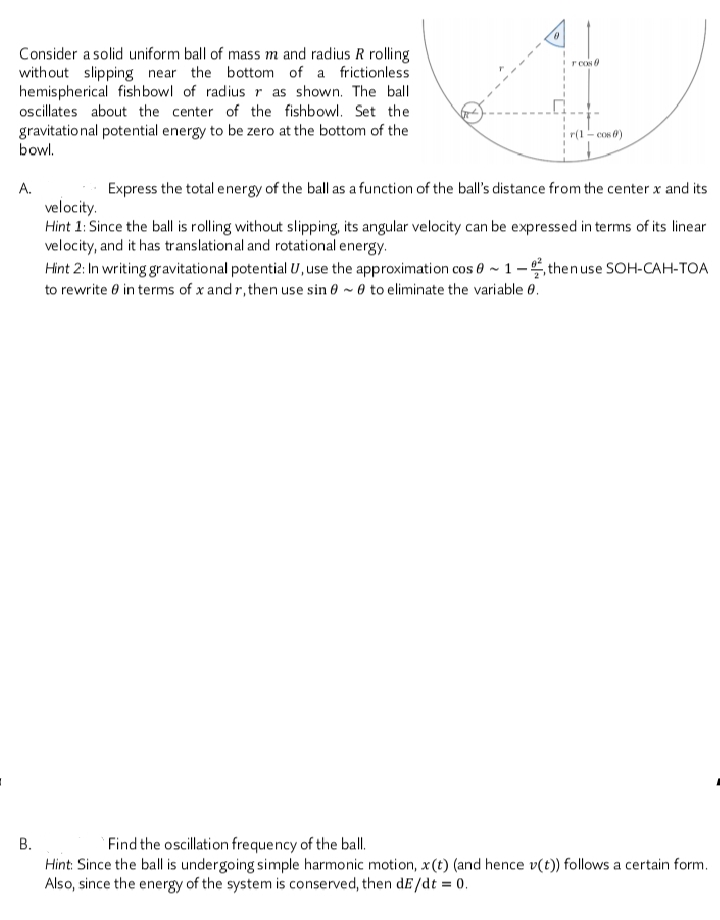Classical Dynamics of Particles and Systems
5th Edition
ISBN:9780534408961
Author:Stephen T. Thornton, Jerry B. Marion
Publisher:Stephen T. Thornton, Jerry B. Marion
Chapter7: Hamilton's Principle-lagrangian And Hamiltonian Dynamics
Section: Chapter Questions
Problem 7.5P
Related questions
Question
Please explain each step

Transcribed Image Text:Consider a solid uniform ball of mass m and radius R rolling
without slipping near the bottom of a frictionless
hemispherical fishbowl of radius r as shown. The ball
oscillates about the center of the fishbowl. Set the
gravitatio nal potential energy to be zero at the bottom of the
bowl.
r(1- cos 0)
A.
Express the total energy of the ball as a function of the ball's distance from the center x and its
velocity.
Hint 1: Since the ball is rolling without slipping, its angular velocity can be expressed in terms of its linear
velocity, and it has translational and rotational energy.
Hint 2: In writing gravitational potential U, use the approximation cos 0 ~ 1 –, then use SOH-CAH-TOA
to rewrite 0 in terms of x and r, then use sin 0 ~ 0 to eliminate the variable 0.
`Find the oscillation frequency of the ball.
Hint: Since the ball is undergoing simple harmonic motion, x(t) (and hence v(t)) follows a certain form.
Also, since the energy of the system is conserved, then dE/dt = 0.
B.
Expert Solution
This question has been solved!
Explore an expertly crafted, step-by-step solution for a thorough understanding of key concepts.
This is a popular solution!
Trending now
This is a popular solution!
Step by step
Solved in 3 steps with 1 images

Knowledge Booster
Learn more about
Need a deep-dive on the concept behind this application? Look no further. Learn more about this topic, physics and related others by exploring similar questions and additional content below.Recommended textbooks for you

Classical Dynamics of Particles and Systems
Physics
ISBN:
9780534408961
Author:
Stephen T. Thornton, Jerry B. Marion
Publisher:
Cengage Learning

Classical Dynamics of Particles and Systems
Physics
ISBN:
9780534408961
Author:
Stephen T. Thornton, Jerry B. Marion
Publisher:
Cengage Learning